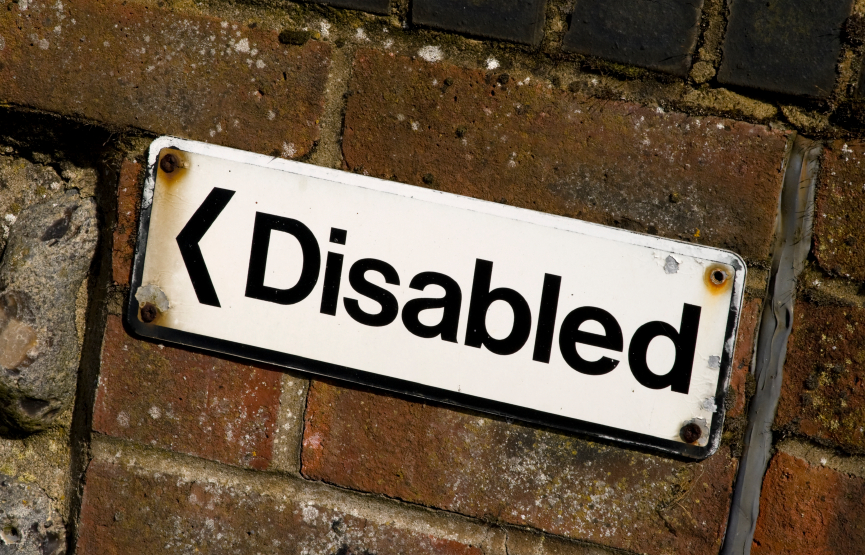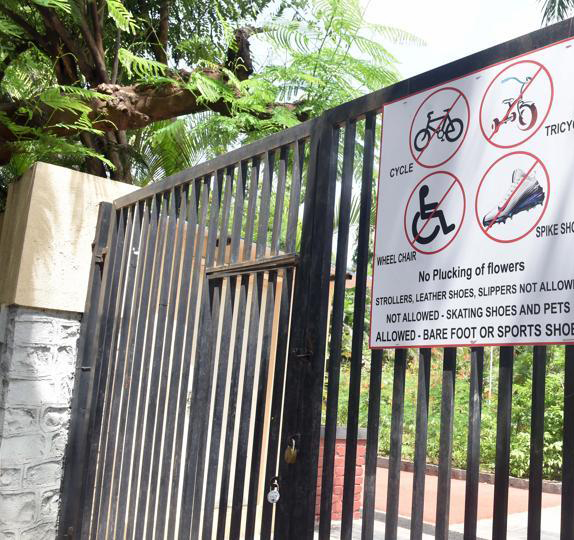“In most people’s vocabularies, design means veneer. It’s interior decorating. It’s the fabric of the curtains or the sofa. But to me, nothing could be further from the meaning of design. Design is the fundamental soul of a human-made creation that ends up expressing itself in successive outer layers of the product or service.”
Steve Jobs, Co-Founder & Former CEO of Apple Computers
Everything is designed. While we often think first of the physical characteristics of an object as “design”, policies, processes, and systems are also designed, and their designs speak volumes about our priorities and values. Consider the values implied by these photos.


We promote “universal design” to facilities personnel and faculty as a way of including disabled students but rarely evaluate how our own service practices facilitate access or what they say about our beliefs and values. We create policies and procedures that require disabled students to jump through hoops and take on responsibilities well beyond those required of their non-disabled peers.
“Design has the power to make us feel competent or incompetent; it has the power to include us or exclude us.”
Elaine Ostroff, Founding Director of the Institute for Human Centered Design
In “What Makes a Good Process”, Rob Davis makes the point that processes are not just what you do, but in many ways they represent what you are. However, disability service providers rarely analyze their procedures with the same attention to the customer’s experience and the messages their practices send as businesses do. In business, good process are defined as having the following characteristics:
- Effective: simple; satisfy the customer; fulfill the agreed upon contract
- Efficient: minimize unnecessary steps and wasteful characteristics
- Relevant: consistently produce high quality experiences for the customer; repeatable
- Valid: valuable and usable; verified against customer and business requirements
- Usable: realistic and easy to use with clear objectives
- Managed: aligned with the business philosophy, customer demands and changing infrastructure
- Measured: revisited and refined and regularly improved
Read, Engage, Reflect
Read
- Visit the Institute for Human Centered Design Website.
Engage
Identify a process or procedure that makes you feel incompetent or frustrated.
- What is the purpose of the process? Why do you use it?
- What are your expectations about how it should work?
- What, specifically, makes it difficult or frustrating for you?
- What specific changes in design would make it easier or more effective for you?
- How would your changes affect other users?
- Why might the designers have made the choices they did in designing the process in its current way?
- What does it say to you about the beliefs, attitudes, and philosophy of the designer?
Reflect
Consider your own office’s processes or visit a the website of a resource office. Count the number of steps required by a disabled student who needs an accommodated exam. Include all of the steps for establishing eligibility for services and coordinating accommodations for each class and each test, throughout a four-year academic program. Consider the steps required of a non-disabled student. Are all the steps necessary and, if not, why are they required?
Why Does This Matter?
Service providers who consider design in their office procedures and practices:
- Consider ways of reducing steps for disabled students in their own practices
- Think about the unintended messages about disability embedded in their language, practices, and actions
- Focus on barriers in the design of all campus environments and seek systemic changes
- Think about inclusion, sustainability, and usability, not just access
- Model good design in all aspects of service delivery to others on campus
Service providers who do not consider design in their office procedures and practices:
- Establish practices with little thought to the impact and extra responsibility given to students who request services
- Focus primarily on individual barriers without consideration for global changes that might increase sustainability
- Talk to faculty, facilities, and other campus departments about universal or inclusive design without modeling these concepts in their own work
- Worry about workload on DS staff rather than the workload their practices have on students receiving services
- Ask others what they do, assuming that what the majority of professionals are doing must be the best